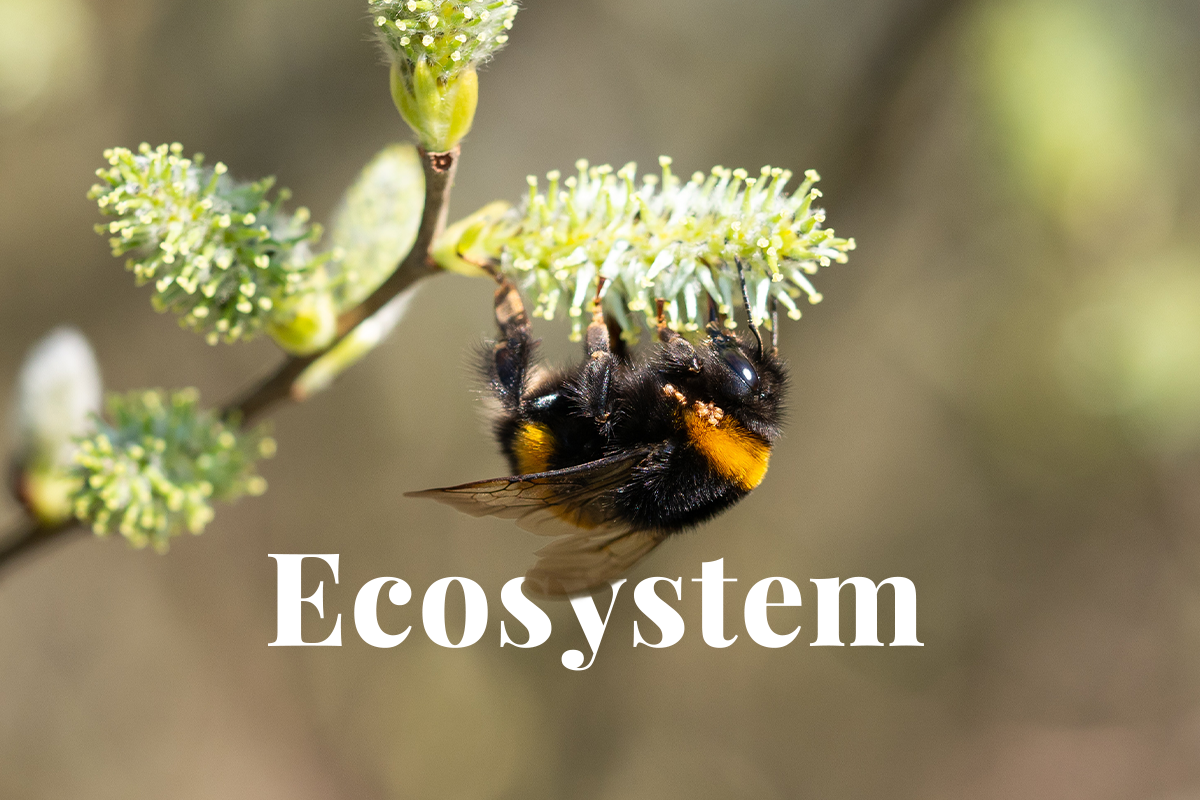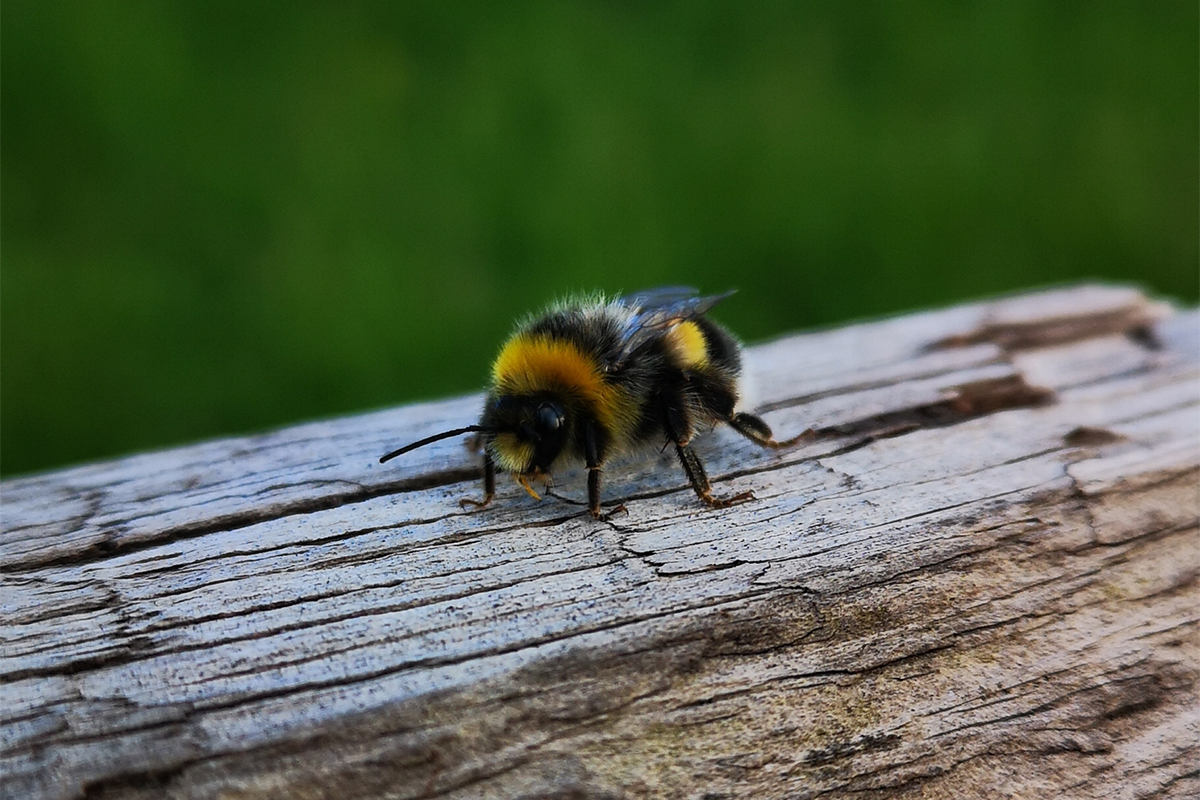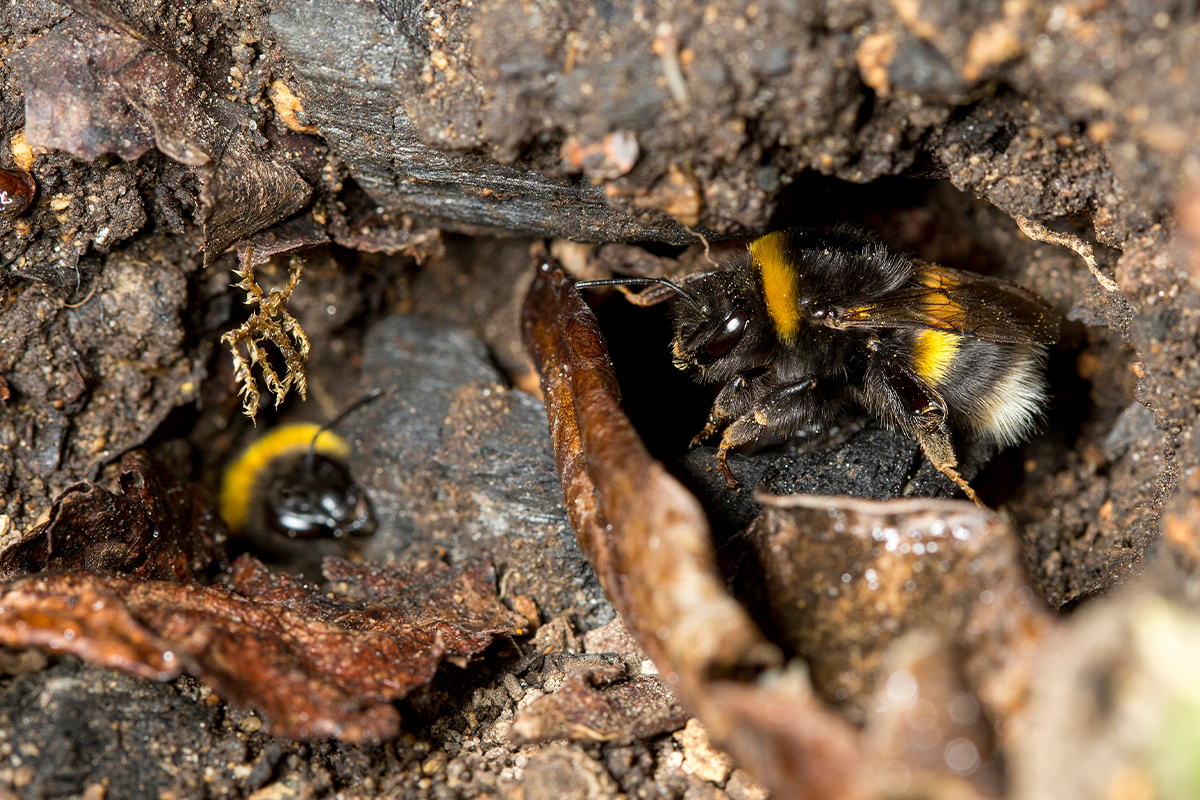Bee populations have an irreplaceable role in our ecosystem. According to the United States Department of Agriculture, bees and butterflies help pollinate approximately 75% of flowering plants and roughly 35% of food crops worldwide.

Bumble bee collecting nectar on catkin in springtime.
Currently, efforts to conserve bumble bees have focused mainly on restoring flowers in open habitats, such as grasslands and plains, during midsummer. However, research materials from recent years suggest that forests may be crucial for bumble bees.
Threats to forests as bumble bee habitats
The world's forests are undergoing rapid transformations due to various factors, such as changing land use, deforestation, invasive species, and wildfires. These changes are expected to impact the critical functions that forests serve in the lives of bumble bees.
Here is a list of four threats affecting forests and bumble bees:
-
Loss of old-growth forests: Deeper areas of forests are the optimal place for overwintering. New forests do not have the needed floor structure where bees can spend the winter. It is, therefore, essential to regularly plant trees, and keep them there, for the long-term conservation of the bumble bee population.
-
Overbrowsing: As deers feed on tree branches, it leads to lower availability of forage plants for bumble bees.
-
Wildfires: Wildfires cause high mortality of bumble bee populations during overwintering. In addition, wildfires destroy much-needed tree canopies that protect bees from heat and wind.
-
Pesticides: The use of chemicals damages bees’ ability to find food, navigate, reproduce, and form colonies.

Bumble bee on wood.

Forested habitats in the bumble bee life cycle
Forested habitats are essential for the life cycles of many bumble bee species and deserve greater attention in their conservation. Unlike open habitats, forests and woody edges offer food resources during early spring and nesting and overwintering habitats during the cold season. Forests also offer favourable conditions for bees, such as mild temperatures, optimal light intensity, and protection from strong winds.Bumble bees have relatively long flight seasons, so forests provide a complementary habitat with different land cover types and resources at different points in the season.
How do bumble bees use forests?
Bumble bees use forested habitats for many of their essential processes. Let’s discuss each in detail:
Forage
For bumble bees, it is vital to have plenty of resources for an extended period because they have a long foraging season. When bees first start emerging in early spring, building their colonies, they must have enough flowers to get started. However, most flowers in open areas don’t bloom that early. This is where forests can provide necessary resources, with early flowering plants and trees within the canopies and understories.
Forests help bees start strong at the very beginning of the season. Otherwise, gaps within resources threaten the survival of the entire colony, and most can’t survive when there is a lack of flowers.

Nesting and overwintering
In spring, once bumble bee queens emerge, they start searching for summer nesting sites. Based on scientific evidence, similarly to many other species, bumble bees make use of forests for favourable and common nesting habitats. According to a study in the United States, the number of nest-searching bumble bee queens was abundant when a forest was within 1km from the study sites.
According to a community science project in the United Kingdom, bumble bee nest density was high along linear features such as hedgerows and forest edges but lower in grasslands and deep forests.
In addition, currently available data shows that forests are a common place for bees to overwinter. Rotting logs or woody debris provide an ideal spot to get through winter, as trees provide shelter and buffer against environmental conditions.

Entrance to a bumble bee nest. One bumble bee is leaving, another is guarding.
Microclimates
There are a lot of factors that negatively affect foraging and pollination success, such as storms, hot temperatures, and precipitation. Forests provide a buffer against strong winds and extreme heat. Forested habitats help bumble bees to survive even during heat waves or severe weather conditions.
Therefore, planting trees and creating comfortable conditions for bumble bees is vital for their survival. Especially maintaining existing forests and planting more trees around agricultural landscapes that protect from strong winds and create additional shaded areas.
In conclusion, protecting and extending forested habitats enhances the effectiveness of conservation efforts and positively impacts ecosystems at large. At DGB Group, we manage large-scale reforestation and nature restoration projects that, among other species, help the bumble bee population to thrive.
You can also take part in helping nature by investing in our projects or just planting a handful of nut and fruit trees that our ecologist will manage for you.







